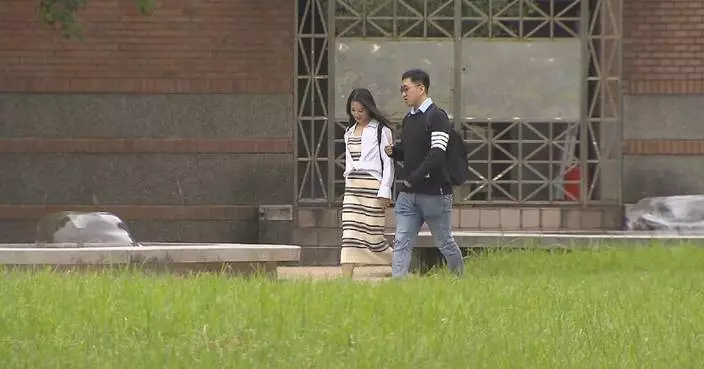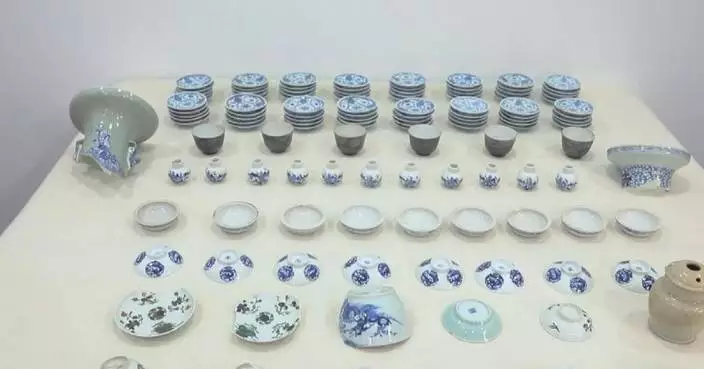As France's advantages are in line with China's new development concept - new quality productive forces - the two countries have greater potential for cooperation, according to an academic.
In an interview with China Global Television Network (CGTN), Benjamin Chiao, Dean for Asia with Paris School of Technology and Business, shared his view on France's policy towards China as well as the cooperation between the two countries.
He believes that France has been advocating a more positive policy towards China among the EU bloc, since both sides could work together in so many issues under globalization.
"I think there are pressing issues the world needs to solve together in global climate, in cancer research and so on and in AI for example. But the world is moving away from globalization. The good thing is France is an important force for a multi-polar world, potentially making the EU bloc the other most important pole other than the U.S. and China. France has been pushing the so-called European strategic autonomy. More recently, France is expected to push the EU bloc to adopt a more positive and pragmatic China policy," Chiao said.
Prospects for bilateral cooperation in science and technology are also promising because what France is good at matches China's new development concept, according to the scholar.
"China is recently pushing the idea of a 'new quality productive forces', meaning advanced productivity that is freed from the traditional growth models and development paths. China is already cutting edge in the AI, electrical vehicle batteries and solar. It is seeking international collaboration to push the frontiers of humankind, and France is especially strong in math and science. In the last 20 years, each year there are four joint institutes established between the two countries. Over 3,000 researchers are currently in these joint projects," said Chiao.

France, China share greater cooperation potential: scholar
Chinese scientists have recently worked together and rebuilt the face of an ancient Chinese ethnic minority emperor via cutting-edge DNA technology.
Emperor Wu of the Xianbei-led Northern Zhou Dynasty (557-581), also known as Yuwen Yong, was an ambitious leader who died at 36. He belonged to the Xianbei nomadic group, which originated from the Mongolian Plateau.
The tomb of the emperor was discovered in 1993 in a village of the city of Xianyang in northwest China's Shaanxi Province. His skull and bones were discovered during an excavation held in 1994 and 1995 at the site of his tomb.
In late March this year, scientists led by the Shaanxi Provincial Institute of Archaeology and the Institute of Archaeological Science of Fudan University managed to decode key features of the emperor and speculate about his cause of death. The emperor might have died from chronic arsenic poisoning due to long-term use of a pellet, which was believed by ancient people to achieve eternal life.
"First, the skeleton can be used to determine age. Second, in terms of age and gender, some pathological research can also be done to see if he had any fractures or other (diseases)," said Zhang Jianlin, a researcher from the Shaanxi Provincial Institute of Archaeology.
Obtaining high-quality genomic data is crucial for restoring the face. Through DNA paleogenomics techniques and optimized DNA extraction, database building and capture methods, more history was revealed.
"First, we have done the shorter fragments enrichment method, which is a DNA extraction method. In addition, we have developed some more sensitive database building method suitable for ancient samples with short fragments. You can regard it as a method to amplify the genetic signal, the extracted DNA. The third is that we have developed a capture method that is more suitable for this kind of highly degraded ancient samples. So we have optimized and improved our approach from three aspects at the same time," said Wen Shaoqing, an associate professor of the Institute of Archaeological Science of Fudan University.
The reconstructed face showed that Yuwen Yong had black hair, yellow skin and brown eyes, while his appearance was typical for people from East or Northeast Asia.
Wen said that with the help of the DNA technology, the accuracy of facial restoration can reach 90 percent.
"As for the accuracy of (facial restoration), the current situation is that if there is a skull as a basis, its accuracy will be relatively high," said Wen.

Scientists rebuild face of ancient emperor using advanced DNA technology










